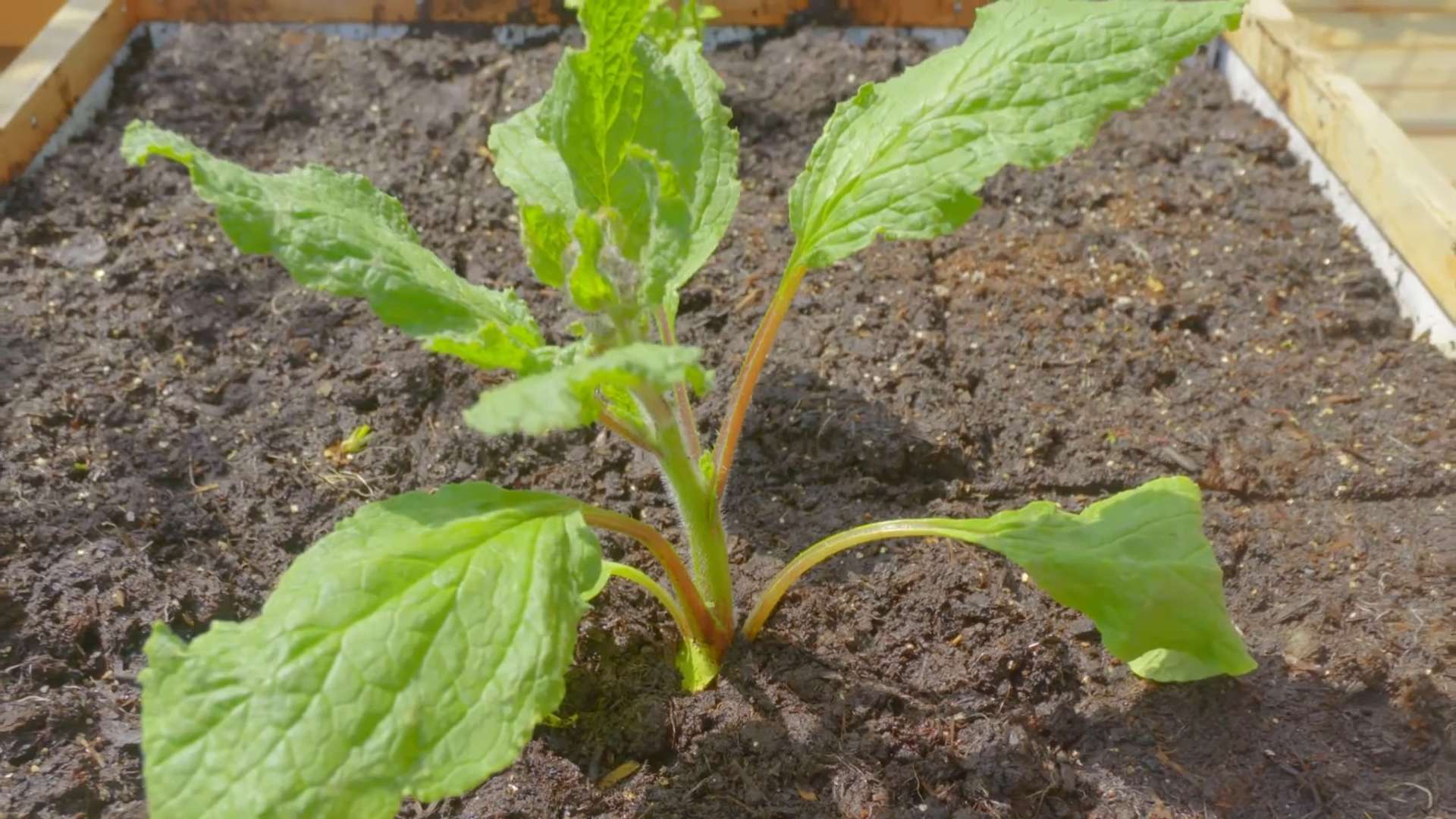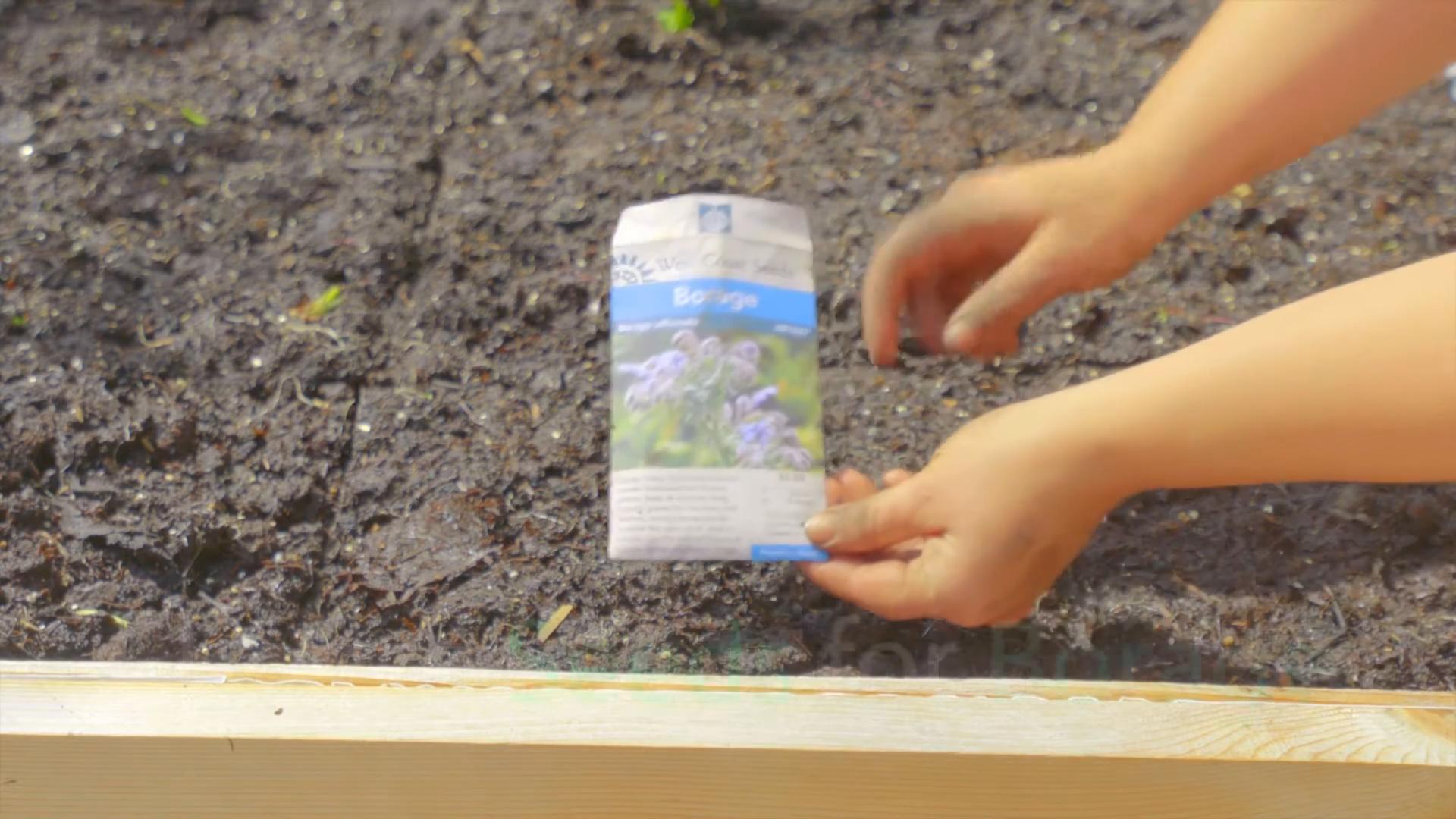Growing Borage at Home is easier than you might think, and I’m here to show you how! Have you ever dreamed of a garden bursting with vibrant blue, star-shaped flowers that not only look beautiful but also attract pollinators and offer a unique culinary twist? Well, dream no more! This DIY guide will unlock the secrets to successfully cultivating this amazing herb right in your own backyard, balcony, or even windowsill.
Borage, also known as starflower, has a rich history dating back to ancient times. The Romans believed it brought courage and happiness, and it was often used in medicinal remedies throughout the Middle Ages. Today, while we might not be facing Roman battles, we still need a little boost of happiness and well-being, and growing borage at home can certainly contribute to that!
But why should you bother with this particular herb? In today’s busy world, many of us are looking for ways to connect with nature, reduce stress, and enjoy fresh, healthy ingredients. Borage offers all of that and more! It’s incredibly easy to grow, requires minimal maintenance, and provides a constant supply of edible flowers and leaves that can be used in salads, drinks, and even desserts. Plus, it’s a fantastic companion plant, attracting beneficial insects that will help keep your garden thriving. So, let’s dive in and discover the simple steps to cultivating this versatile and beautiful herb!

Growing Borage: A Beginner’s Guide to This Bee-Loving Herb
Hey there, fellow gardening enthusiasts! I’m so excited to share my experience with growing borage. It’s a fantastic herb – beautiful, useful, and incredibly easy to cultivate. Plus, the bees absolutely adore it! If you’re looking for a low-maintenance plant that adds a touch of whimsy to your garden and attracts pollinators, borage is definitely the way to go. Let’s dive in!
What is Borage and Why Grow It?
Borage (Borago officinalis), also known as starflower, is an annual herb with striking blue, star-shaped flowers. It’s native to the Mediterranean region but has naturalized in many parts of the world. Beyond its beauty, borage offers several benefits:
* Edible Flowers and Leaves: The flowers have a mild cucumber-like flavor and can be used in salads, drinks, and as a garnish. The young leaves can also be eaten, though they can be a bit prickly.
* Attracts Pollinators: Borage is a magnet for bees, butterflies, and other beneficial insects, making it a valuable addition to any garden.
* Soil Improvement: Borage is a dynamic accumulator, meaning it draws nutrients from the soil and stores them in its leaves. When the plant decomposes, these nutrients are released back into the soil, enriching it for other plants.
* Medicinal Properties: Borage oil is rich in gamma-linolenic acid (GLA), an omega-6 fatty acid that has anti-inflammatory properties.
* Easy to Grow: Seriously, this plant is a breeze to grow, even for beginners!
Getting Started: Seeds or Seedlings?
You have two options for starting your borage journey: seeds or seedlings. I personally prefer starting from seed because it’s more cost-effective and borage germinates readily.
* Seeds: This is the most common and economical way to grow borage. You can purchase seeds online or at your local garden center.
* Seedlings: If you’re short on time or want a head start, you can buy borage seedlings from a nursery. Just make sure the seedlings are healthy and free from pests or diseases.
Sowing Borage Seeds: A Step-by-Step Guide
Borage is best sown directly into the garden, as it doesn’t transplant well. Here’s how I do it:
1. Choose the Right Time: Borage prefers cool weather, so the best time to sow seeds is in early spring or late summer/early fall. In warmer climates, you can sow seeds throughout the year. I usually aim for a few weeks before the last expected frost in spring.
2. Prepare the Soil: Borage isn’t too picky about soil, but it does prefer well-drained soil. Amend your soil with compost or other organic matter to improve drainage and fertility. I like to loosen the soil with a garden fork and remove any rocks or debris.
3. Sow the Seeds: Sow the seeds about ½ inch deep and 6-12 inches apart. You can sow them in rows or scatter them randomly for a more natural look. I usually sow a few extra seeds in each spot to ensure good germination.
4. Water Gently: After sowing, water the soil gently to avoid disturbing the seeds. Keep the soil consistently moist until the seedlings emerge. I use a watering can with a rose head to provide a gentle shower.
5. Thin the Seedlings: Once the seedlings are a few inches tall, thin them to the desired spacing. This will give the plants enough room to grow and prevent overcrowding. I usually thin them to about 12 inches apart.
Caring for Your Borage Plants: The Basics
Once your borage plants are established, they’re relatively low-maintenance. Here’s what you need to know:
* Sunlight: Borage prefers full sun, but it can tolerate partial shade. In hotter climates, some afternoon shade can be beneficial. I’ve found that at least 6 hours of sunlight is ideal.
* Watering: Water regularly, especially during dry periods. Borage prefers consistently moist soil, but avoid overwatering, which can lead to root rot. I usually water deeply once or twice a week, depending on the weather.
* Fertilizing: Borage doesn’t require a lot of fertilizer. In fact, too much fertilizer can lead to leggy growth and fewer flowers. If your soil is poor, you can amend it with compost or use a balanced organic fertilizer sparingly. I rarely fertilize mine, and they do just fine.
* Weeding: Keep the area around your borage plants free from weeds. Weeds can compete with the plants for nutrients and water. I like to hand-pull weeds regularly to prevent them from becoming established.
* Deadheading: Deadheading spent flowers will encourage the plant to produce more blooms. Simply snip off the faded flowers with scissors or pruning shears. I try to deadhead regularly to keep my borage plants looking their best.
* Pest and Disease Control: Borage is generally pest and disease-resistant. However, it can occasionally be affected by aphids or powdery mildew. If you notice any pests or diseases, treat them promptly with an appropriate organic insecticide or fungicide. I’ve only had minor issues with aphids, which I usually control with a strong spray of water.
Harvesting Borage: Flowers and Leaves
You can start harvesting borage flowers and leaves as soon as the plant is mature enough.
* Flowers: Harvest the flowers when they are fully open. They are best used fresh, but you can also dry them for later use. I love adding borage flowers to salads, lemonade, and cocktails.
* Leaves: Harvest the young leaves when they are tender. Older leaves can be prickly and less palatable. I use borage leaves sparingly in salads and soups.
Propagating Borage: Easy Self-Seeding
One of the great things about borage is that it self-seeds readily. This means that if you let some of the flowers go to seed, you’ll likely have new borage plants popping up in your garden the following year.
* Allowing Self-Seeding: Simply let some of the flowers mature and dry on the plant. The seeds will eventually fall to the ground and germinate.
* Collecting Seeds: If you want to control where your borage plants grow, you can collect the seeds and sow them yourself. To collect seeds, wait until the seed pods are dry and brown. Then, cut off the seed heads and place them in a paper bag. Allow the seed heads to dry completely, then shake the bag to release the seeds. Store the seeds in a cool, dry place until you’re ready to sow them.
Using Borage in the Kitchen: Culinary Delights
Borage flowers and leaves can add a unique flavor and visual appeal to your dishes.
* Salads: Borage flowers and young leaves can be added to salads for a refreshing cucumber-like flavor.
* Drinks: Borage flowers can be used to garnish drinks or infused into lemonade or cocktails.
* Soups: Borage leaves can be added to soups for a subtle flavor.
* Candied Flowers: Borage flowers can be candied for a sweet treat.
* Borage Oil: Borage oil can be used in salad dressings or taken as a dietary supplement.
Borage in the Garden: Companion Planting
Borage is a great companion plant for many vegetables and herbs.
* Tomatoes: Borage is said to improve the flavor of tomatoes and deter tomato hornworms.
* Strawberries: Borage is believed to attract pollinators to strawberry plants and improve fruit set.
* Squash: Borage can help deter squash bugs.
* Cabbage: Borage can deter cabbage moths.
Troubleshooting Common Borage Problems
While borage is generally easy to grow, you may encounter a few problems.
* Leggy Growth: Leggy growth can be caused by too much fertilizer or not enough sunlight. To fix this, reduce fertilizer and move the plant to a sunnier location.
* Aphids: Aphids can be controlled with a strong spray of water or an organic insecticide.
* Powdery Mildew: Powdery mildew can be prevented by providing good air circulation and avoiding overwatering. If you notice powdery mildew, treat it with an organic fungicide.
* Lack of Flowers: A lack of flowers can be caused by too much nitrogen fertilizer or not enough sunlight. To fix this, reduce nitrogen fertilizer and move the plant to a sunnier location.
Final Thoughts: Enjoying Your Borage Patch
Growing borage is a rewarding experience. Not only will you have a beautiful and useful herb in your garden, but you’ll also be helping to support pollinators. So, go ahead and give it a try! I’m sure you’ll love it as much as I do. Happy gardening!

Conclusion
So, there you have it! Growing borage at home is not only achievable, but it’s also a rewarding experience that brings a touch of beauty and practicality to your garden and kitchen. From its vibrant blue flowers that attract pollinators to its edible leaves and blossoms with their unique cucumber-like flavor, borage offers a multitude of benefits.
We’ve walked you through the simple steps, from selecting the right location and preparing the soil to sowing the seeds and providing ongoing care. Remember, borage is a relatively low-maintenance plant, making it perfect for both seasoned gardeners and beginners alike. Its resilience and adaptability mean you can enjoy a bountiful harvest even with minimal effort.
But why is this DIY trick a must-try? Because it empowers you to connect with nature, cultivate your own fresh ingredients, and reduce your reliance on store-bought produce. Imagine adding freshly picked borage leaves to your salads, garnishing your drinks with its delicate blue flowers, or even using it as a natural remedy for various ailments. The possibilities are endless!
Beyond the Basics: Exploring Borage Variations
Don’t be afraid to experiment with different varieties of borage. While the common blue-flowered borage is the most widely known, you can also find white-flowered varieties that offer a subtle variation in appearance. Consider planting both to add visual interest to your garden.
Furthermore, you can explore different ways to incorporate borage into your culinary creations. Try adding chopped borage leaves to your omelets, soups, or stir-fries. Infuse borage flowers in water or lemonade for a refreshing summer beverage. Or, get creative and use borage as a natural dye for fabrics or crafts.
A Call to Action: Grow Your Own Borage Today!
We wholeheartedly encourage you to embark on this gardening adventure and experience the joys of growing borage at home. It’s a simple, sustainable, and incredibly rewarding way to enhance your life and connect with the natural world.
Once you’ve successfully grown your own borage, we’d love to hear about your experience! Share your tips, tricks, and culinary creations with us in the comments below. Let’s create a community of borage enthusiasts and inspire others to embrace the joys of homegrown goodness. Your insights and experiences can help others discover the magic of this versatile and beautiful plant. Let us know if this guide helped you with your own growing borage journey!
Frequently Asked Questions (FAQ)
What are the best conditions for growing borage?
Borage thrives in full sun to partial shade and well-drained soil. It prefers a slightly acidic to neutral pH. While it can tolerate poor soil conditions, amending the soil with compost or other organic matter will promote healthier growth and more abundant flowering. Borage is also relatively drought-tolerant once established, but regular watering during dry spells will help it flourish.
How do I start borage seeds?
Borage seeds can be directly sown into the garden in spring or early summer after the last frost. Alternatively, you can start them indoors 4-6 weeks before the last frost and transplant them outdoors once the weather warms up. To sow seeds directly, scatter them thinly over the soil surface and lightly cover them with soil. Keep the soil moist until the seeds germinate, which usually takes 7-14 days. If starting seeds indoors, sow them in seed trays or small pots filled with seed-starting mix. Transplant the seedlings into larger pots once they have developed a few sets of true leaves.
How often should I water borage?
Water borage regularly, especially during dry periods. Aim to keep the soil consistently moist, but avoid overwatering, which can lead to root rot. A good rule of thumb is to water deeply when the top inch of soil feels dry to the touch. Mulching around the plants can help retain moisture and suppress weeds.
Does borage need fertilizer?
Borage is not a heavy feeder and generally does not require regular fertilization. However, if your soil is particularly poor, you can amend it with compost or a balanced organic fertilizer before planting. Avoid over-fertilizing, as this can lead to excessive foliage growth at the expense of flowering.
How do I harvest borage leaves and flowers?
Borage leaves can be harvested throughout the growing season. Pick young, tender leaves for the best flavor. The flowers can also be harvested as they bloom. Gently pluck the flowers from the plant, being careful not to damage the stems. Both the leaves and flowers are best used fresh, but they can also be dried for later use.
Is borage invasive?
Borage can self-seed readily, so it may spread if not managed properly. To prevent unwanted spread, deadhead the flowers before they go to seed. You can also collect the seeds and save them for planting the following year. However, borage is generally not considered to be highly invasive and is relatively easy to control.
What are the benefits of growing borage?
Borage offers a multitude of benefits. It attracts pollinators, such as bees and butterflies, to your garden. Its edible leaves and flowers have a unique cucumber-like flavor and can be used in salads, drinks, and other culinary creations. Borage is also a good companion plant for tomatoes, strawberries, and other vegetables, as it helps to deter pests and improve soil health. Additionally, borage has been traditionally used for its medicinal properties, including its anti-inflammatory and skin-soothing effects.
Are there any precautions I should take when handling borage?
Some people may experience skin irritation from handling borage leaves, especially if they have sensitive skin. It’s always a good idea to wear gloves when working with plants, especially if you have a history of allergic reactions. Additionally, borage contains small amounts of pyrrolizidine alkaloids (PAs), which can be toxic to the liver if consumed in large quantities over a long period of time. However, the levels of PAs in borage are generally considered to be low and safe for occasional consumption. If you have any concerns, consult with a healthcare professional before consuming borage.
Can I grow borage in containers?
Yes, borage can be successfully grown in containers. Choose a pot that is at least 12 inches in diameter and fill it with well-draining potting mix. Place the container in a sunny location and water regularly. Container-grown borage may require more frequent watering and fertilization than plants grown in the ground.
What pests and diseases affect borage?
Borage is generally resistant to pests and diseases. However, it can occasionally be affected by aphids, spider mites, or powdery mildew. These problems can usually be controlled with organic pest control methods, such as insecticidal soap or neem oil. Ensure good air circulation around the plants to prevent powdery mildew.




Leave a Comment